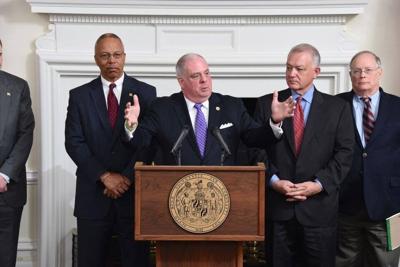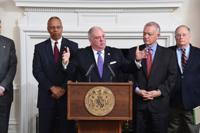ANNAPOLIS, Md. (AP/WBOC) - Gov. Larry Hogan wants to take more control of the budget process as a way of steering Maryland toward long-term fiscal health.
The Republican governor outlined his spending priorities for his second year in office on Thursday. While not mentioning his Democratic predecessor, Martin O'Malley, by name, Hogan said the state's finances were chronically mismanaged for eight years.
As announced by the governor, the FY 2017 operating budget will total $17.1 billion, which will include a Rainy Day Fund balance of $1.1 billion and a cash balance of $445 million going into FY 2018. Hogan says he will fully fund all spending increases that are required by law. Those mandates account for 83 percent of the state budget. But in exchange, he won't allow the Democratic-controlled legislature to tweak funding formulas as it has in the past.
“Our administration has said repeatedly that we would bring fiscal restraint back to Annapolis, hold the line on spending, and increase funding for top priorities like education and infrastructure. This year's budget accomplishes all those things,” said Governor Hogan. “I hope that it will set the stage for bipartisanship, cooperation, and continued fiscal responsibility.”
Hogan also plans to propose $400 million in tax cuts over five years. Democratic House Speaker Michael Busch says he's curious about how those cuts would be paid for.
Highlights of the governor’s FY 2017 proposed budget include:
- $17.1 billion operating budget
- $1.1 billion Rainy Day Fund balance
- Approximately $440 million cash balance going into FY 2018
- Fully funds every single General Assembly statutory spending obligation
- Delivers approximately $400 million in tax and fee relief to an estimated 1 million Maryland citizens and to over 300,000 small businesses over the next five years
- Fully funds 100 percent of education spending increases – based on the formulas set by the legislature
- Fully funds the Geographic Cost of Education Index
- $6.3 billion for K-12 education, an increase of $140 million
- $314 million for new school construction projects
- $231 million in highway user revenues – an increase of 18.9%
- $7.3 billion in aid to local governments – an increase of 3.3%
- Sets capital debt limit at $995 million – below the level proposed by the legislature
- $35 million to address the long-standing deficiencies accrued by the previous administration





